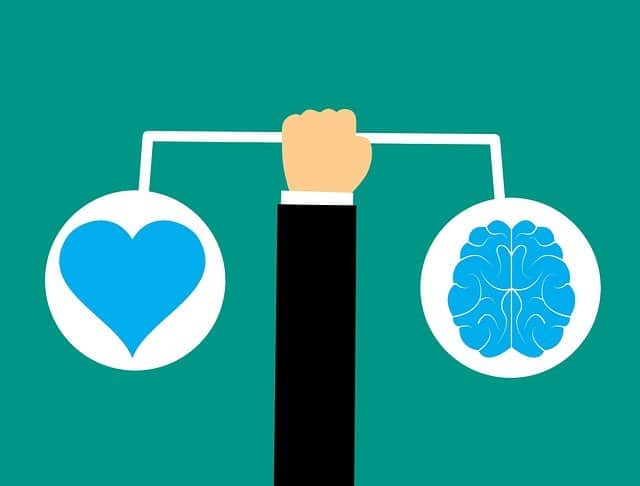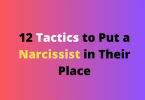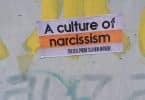Do you want to discover a new world of communication that decodes lies? You can do it by understanding the body language of the person you love. People can hide their intentions and cover them with decorative sentences; however, their eyes and body never lie. And if you’re good enough to read the faces and body language of the person, you can easily tell what their intentions are. However, the body language of a person may also be affected by their culture, personality, or some of their surrounding circumstances. So before judging someone, try to keep these factors in mind.
After reading this article, you will be able to gain knowledge of communication styles and experience personal growth. It will also enable you to improve your relationships. Let’s start!
Number 14: Hand-to-face gestures.
Have you ever noticed someone placing their hand on their face while talking to you? It could mean that they’re hiding something or not disclosing all the information. It can also mean that they are not certain about what they are saying, and they may feel uncomfortable and lack confidence.
Number 13: Fake smile.
People often hide their emotions by faking a smile. To read their true emotions, you can see if they are smiling honestly. A true smile causes crinkles around the eyes. If you notice no crinkles around the eyes, the smile is fake. You can try it yourself. When you smile and pose for a selfie, you will find no crinkles around your eyes. Notice your face when you smile genuinely, and you will see that crinkles will be formed around your eyes.
Number 12: Mirroring.
Mirroring someone secretly likes you. If they copy your movements, it’s a positive signal that means the person wants to connect with you and they feel a strong bond with you. It also means that the person is deeply in love with you or they admire you the most. Suppose you fold your sleeves in front of someone and they copy you immediately. That means the person is in love with you. It can also help you in professional meetings. You can guess if they agree with you by reading their body language. If they copy your moves, that means they agree with you.
Number 11: Nail biting.
Nail biting shows a strong emotion of insecurity. When someone bites their nail, they are afraid of the situation or generally insecure about themselves. Nail biting may be a habitual thing that can tell that the person has insecurity. When you bite your nails, your hands cover your mouth, which provides additional security, and biting your nails helps you to avoid a stressful situation or to minimize it. If someone is biting their nail in front of you, that means they are nervous about something.
Number 10: Eye movements.
The eyes are the most important body part that can show what’s going on in your soul. Eyes can show true emotions of crying, laughing, lying, nervousness, mischief, and many more opinions a person is thinking.
- Looking in the left direction: If a person is looking towards the left, he recollects data. This could also mean that he is remembering the points and considering visual thoughts. He may be refreshing the ideas in his mind before engaging in the original conversation.
- Looking in the upward direction: In classrooms and boring lessons, you must have stared at the ceiling if you are not interested in the lecture. That means the conversation is so boring that you find something interesting on the ceiling. It also means that you cannot understand the conversation and now want to leave the class but cannot because you have to maintain your attendance. If you are in a meeting and the other person is looking upward, that means he is getting bored.
- Looking in the right direction: Looking in the right direction can be associated with various meanings in non-verbal communication, but it is important not to rely on it as a single indicator of a person’s thoughts or emotions. Looking to the right and up may suggest that the person is engaging in more creative thinking. However, it is also associated with self-doubt in some cases. To determine whether someone is lying or has self-doubt, observing other nonverbal cues and listening carefully to what they are saying is necessary. For instance, if an employee is looking to the right while explaining their absence in a meeting, it may indicate that they are creating a story or feeling uncertain. But it does not necessarily mean that they are lying. To accurately read body language, having experience and observing multiple cues is helpful.
Eye contact. If someone is making eye contact with you, that means the person is confident. When you give presentations and make eye contact with your colleagues, you are confident. Those who make eye contact with you listen carefully. Honesty is also associated with eye contact. Eye contact also attracts and increases love in someone’s heart. It is also used to draw the attention of somebody. Making harsh eye contact means your eye contact is too long and makes the other person uncomfortable. It can also threaten or damage your relationship.
Rolling eyes. If someone rolls their eyes in front of you, they are frustrated. It’s also a sign that the other person does not believe in what you are saying.
Number 9: Crossed arms and legs.
Crossing your arms while standing represents that you are disinterested, defensive, annoyed, or just bored. This body language can also help you in business dealings. For example, if you present a business proposal in front of someone and they cross their arms, you need to change your communication strategy to convince them. If someone is sitting with crossed legs at a meeting, that means the person is disinterested and emotionally exits from the meeting. Also, if you are giving a speech and some of your audience is sitting with crossed arms and legs, they are receiving 35% less information than the other audience.
Number 8: Hands on hips.
Hands-on hips mean you are a confident and extroverted person. It can be seen as an aggressive posture. You are neither defensive nor hiding anything when your hands are on your hip. This gesture opens your body and is associated with power, telling others you are ready to fight. This can be a good posture to adapt in certain situations, but avoid using it frequently because it may pose overconfidence. Also, avoid spreading your legs too wide with your hands on your hips as it will give a negative impression and portray you as an angry person.
Number 7: Head nod.
This body gesture is positive and shows that your audience is agreeing with you. It can help you analyze that you are giving a good presentation and your audience is listening attentively.
Number 6: Firm handshake.
A firm handshake is also positive body language. It shows enthusiasm. When someone offers you a strong handshake, this body gesture tells that the person is confident. If they reach you for the handshake first, that shows their warmth and respect. A firm handshake does not necessarily mean a forceful, painful, or intimidating one. This body language conveys that you are confident. But if you do it painfully, that shows negativity and forcefulness.
Number 5: Open palms.
Open palms are a sign of honesty, openness, and truthfulness. This gesture also conveys a message that you are down to earth. Open palms in front of the body represent pleading beggars, which means harmless. If your audience has open arms, that means they are accepting your information and are open to your ideas.
Number 4: Closed fists.
Closed fists are a negative body language sign, and it shows aggression and a sense of conflict. You will notice that your fists become automatically closed when someone is poking your head or you feel threatened or afraid of something. It also shows that you are nervous and confused. You will notice your closed fists when you want to say something but hold yourself back from saying it. This body language sign is a reaction to your internal emotions. When you see someone closing their fists, you can guess that they may be aggressive, confused, or anxious based on other circumstances.
Number 3: Overuse of hand gestures.
Hand gestures are a good sign, representing confidence. But if you overdo it while speaking, it may give the impression that you are anxious and nervous. That may distract the listeners because they may focus on your hand gestures instead of your words. So, it may be off-putting and negative if overused.
Number 2: Nose gestures.
Nose movements also show emotions that can be guessed by focusing on the nose of other people.
Flared nose: The flared nose shows that your feelings are deep. When you breathe heavily with a wide and flared nose, it allows more air to pass and allows you to combat.
Wrinkled nose: A wrinkled nose represents smell or dissatisfaction. For example, if you do not like an idea, you will find yourself wrinkling your nose.
Number 1: Eyebrow Movements.
Eyebrow movements show a lot of emotions. You often find actors practicing moves with their eyebrows to upgrade their acting skills.
Raised eyebrows: Raised eyebrows are a sign of surprise, disbelief, doubt, and demands. Seeing someone with raised eyebrows and an open mouth means they are surprised. Raising eyebrows with a closed mouth represents that the person might have a question. However, if someone lowers their brows, it shows aggression. It also indicates that the person does not believe in your ideas, which can represent confusion.







Leave a Comment